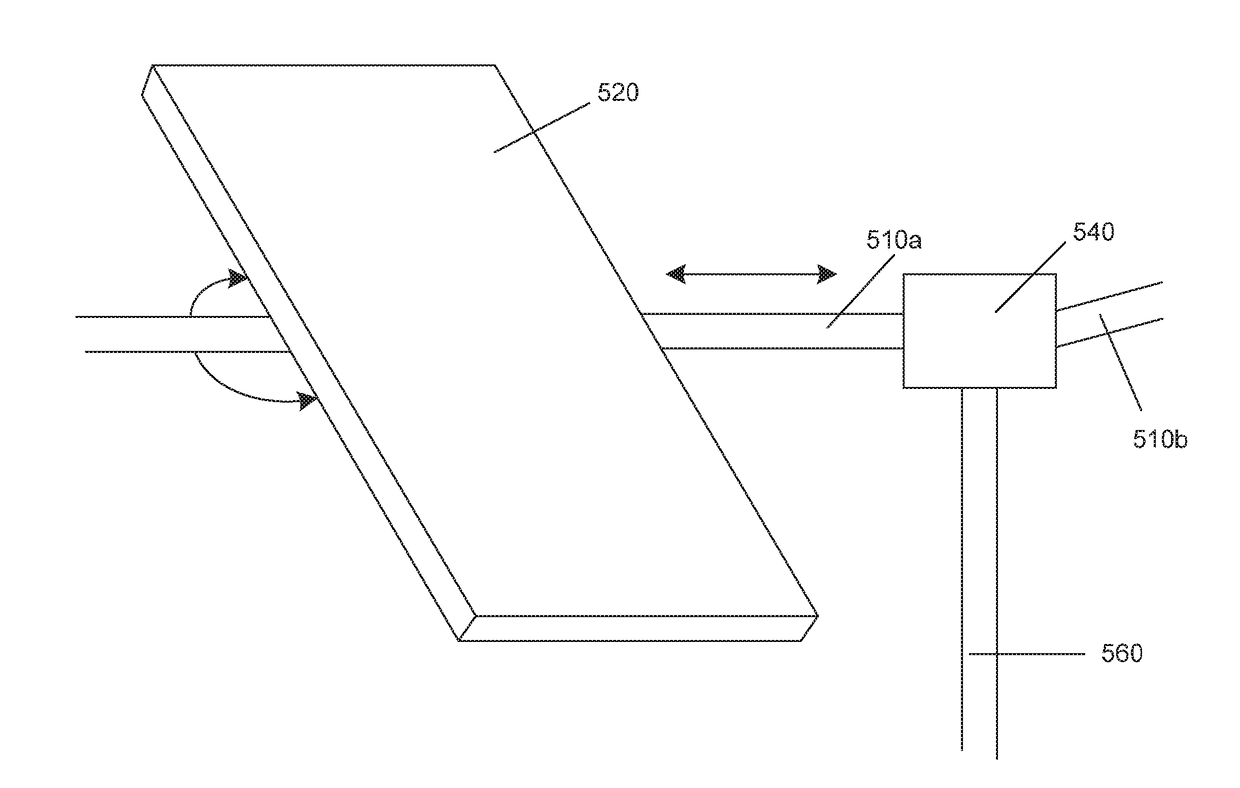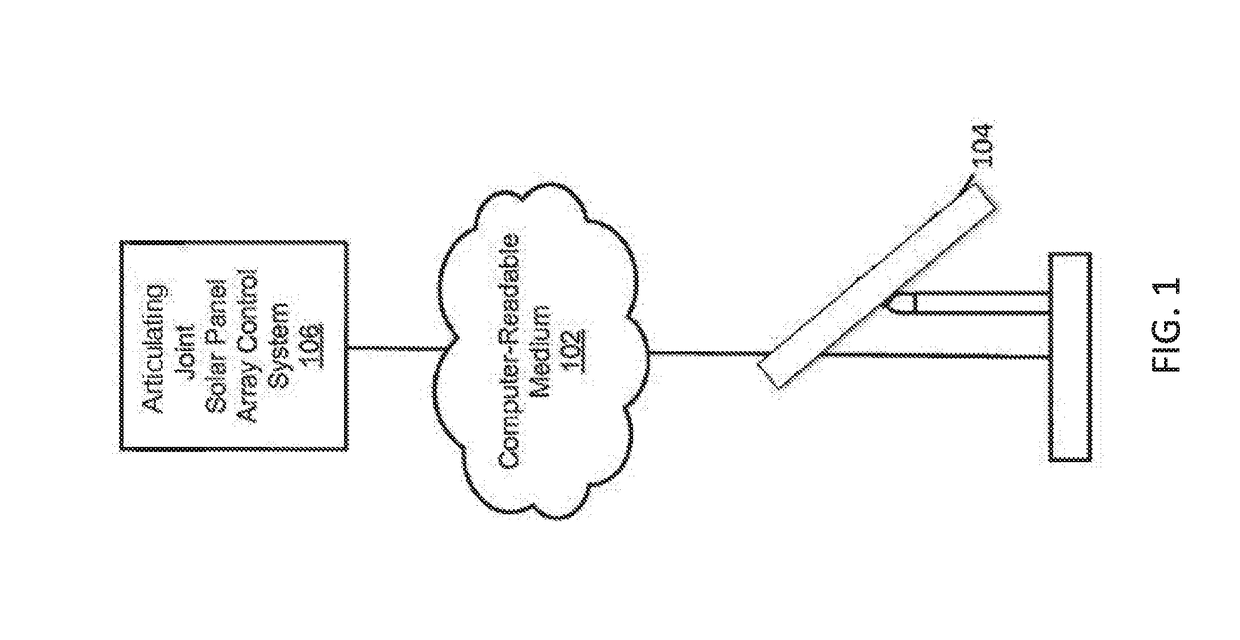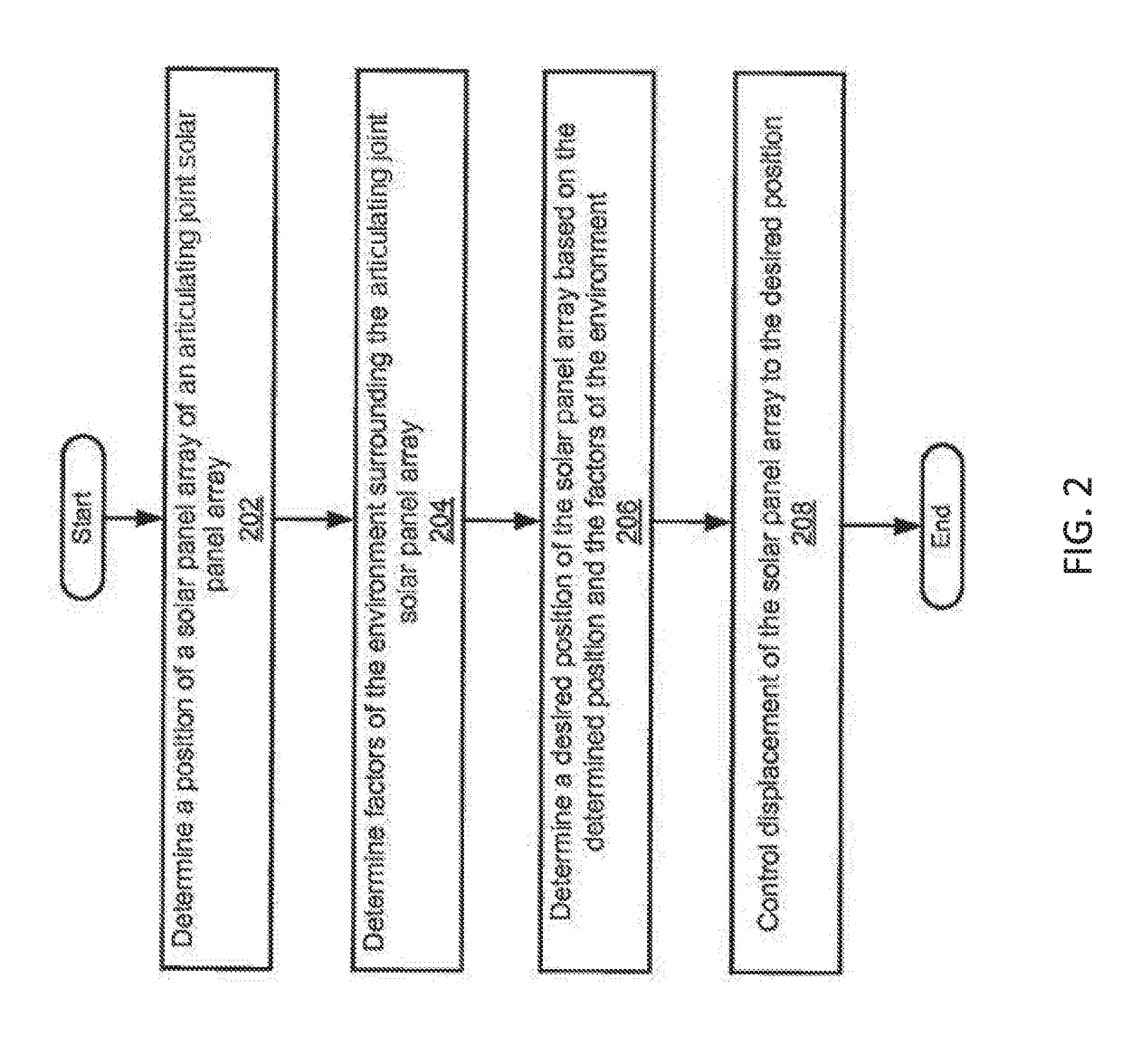Articulating joint solar panel array
a solar panel array and articulating joint technology, applied in the direction of photovoltaic supports, heat collector mounting/supports, light and heating apparatus, etc., can solve the problems of significant grading, fixed tilt solar panel mounting structures, other limitations of relevant art, etc., and achieve the effect of convenient arrangemen
- Summary
- Abstract
- Description
- Claims
- Application Information
AI Technical Summary
Benefits of technology
Problems solved by technology
Method used
Image
Examples
Embodiment Construction
[0020]While various embodiments of the invention have been shown and described herein, it will be obvious to those skilled in the art that such embodiments are provided by way of example only. Numerous variations, changes, and substitutions may occur to those skilled in the art without departing from the invention. It should be understood that various alternatives to the embodiments of the invention described herein may be employed.
[0021]A solar panel array may be provided, which may be used to transform solar energy into electrical energy. The solar panel array may include one or more solar panels that may be supported using one or more solar panel support structures. The solar panels may move, which may allow for effective capture of solar energy. A solar panel array may include an articulating joint that may permit variation in how the solar panel support structures are arranged. This may allow for the accommodation of different types of terrain or land formations on which the so...
PUM
 Login to View More
Login to View More Abstract
Description
Claims
Application Information
 Login to View More
Login to View More - R&D
- Intellectual Property
- Life Sciences
- Materials
- Tech Scout
- Unparalleled Data Quality
- Higher Quality Content
- 60% Fewer Hallucinations
Browse by: Latest US Patents, China's latest patents, Technical Efficacy Thesaurus, Application Domain, Technology Topic, Popular Technical Reports.
© 2025 PatSnap. All rights reserved.Legal|Privacy policy|Modern Slavery Act Transparency Statement|Sitemap|About US| Contact US: help@patsnap.com



